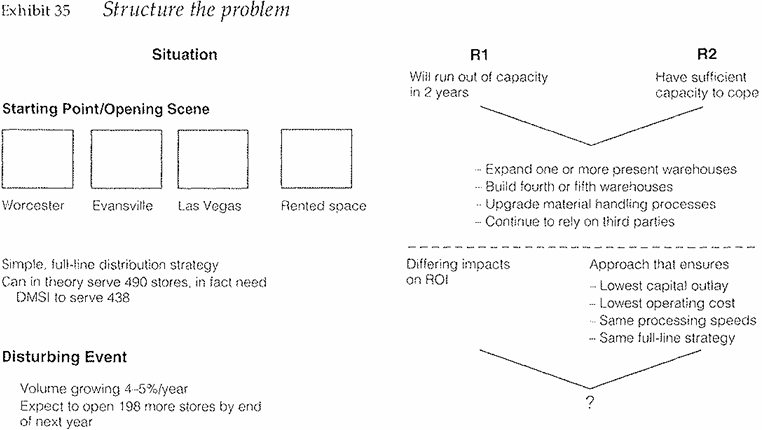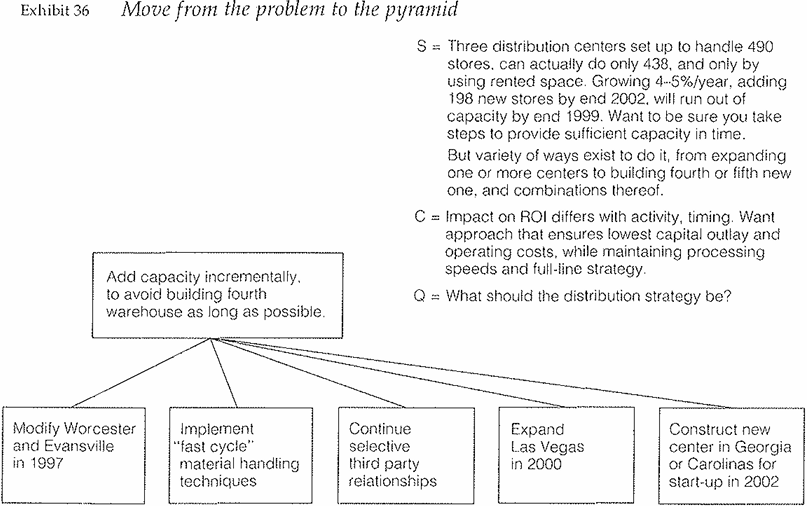
REAL-LIFE EXAMPLE
 المؤلف:
BARBARA MINTO
المؤلف:
BARBARA MINTO
 المصدر:
THE MINTO PYRAMID PRINCIPLE
المصدر:
THE MINTO PYRAMID PRINCIPLE
 الجزء والصفحة:
137-8
الجزء والصفحة:
137-8
 2024-09-19
2024-09-19
 808
808
REAL-LIFE EXAMPLE
To give you a sense of how easily the elements of the problem definition translate into the parts of the introduction, here is a real-life example going from the problem definition to the final pyramid. It concerns a retail distributor of household goods. Here are the problem elements:
The company had three distribution centers, located in Worcester, Evansville, and Las Vegas, plus rented space from a company called OMSI. Capacity of the three warehouses was meant to serve 490 stores, but in fact the four centers were sometimes hard pressed to serve only the present 438 stores. Given an annual growth rate of 4-5%, plus plans to open 198 new stores by the end of the year, the company expected to run out of capacity in 2 years.

The company had identified a variety of actions it could take to provide the necessary capacity: expand one or more of the present warehouses, build a fourth or fifth new warehouse, upgrade material handling processes, or continue to rely on third parties. Each action, however; had a different impact on ROI. The company wanted to select a strategy that would ensure the lowest capital outlay and operating costs, while still allowing it to operate with the same processing speeds and using the same full-line strategy.
The problem can be laid out as shown in Exhibit 35. From it, you can see that you will want an introductory structure that is a variation.
S = We have a problem
C = We have alternative ways to solve it
Q = Which?
You would then get the introduction and pyramid shown in Exhibit 36.

The Problem Definition Framework is a difficult concept to take in and appreciate at first reading. But it is nevertheless an extremely useful tool to have available whenever you need to explain a problem, whether orally or in writing. And you have just seen that it serves as a wonderful guide to developing the introduction to a document meant to recommend a solution to the problem.
Between the definition of the problem and the discovery of the solution, of course, comes the actual problem analysis-the identification of the causes of the problem and the assessment of possible courses of action to eliminate it. The value of the Problem Definition Framework here is that it guides you to work most efficiently in identifying and structuring the analyses required to develop an effective solution.
 الاكثر قراءة في Writing
الاكثر قراءة في Writing
 اخر الاخبار
اخر الاخبار
اخبار العتبة العباسية المقدسة


